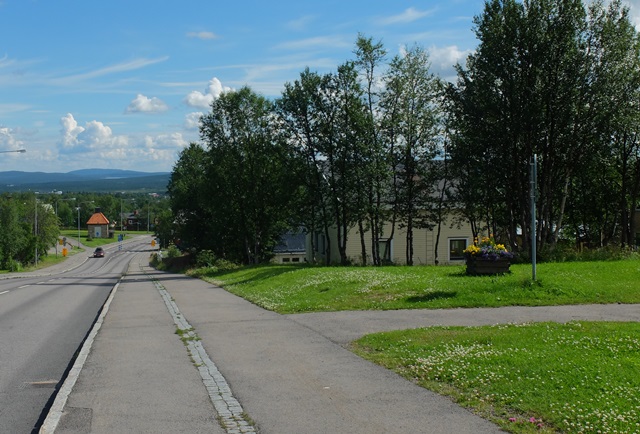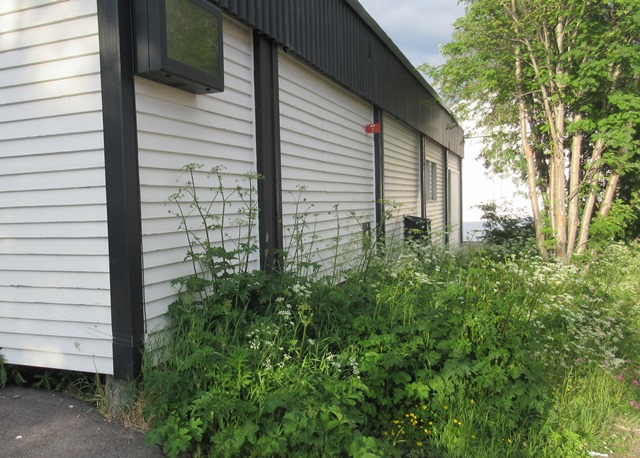Wildflowers and grasses tend to shoot up all at the same time this far north, creating rather delicately weavings of colour across open areas in town. Every year at this time it’s a bit sad to watch them slaughtered so quickly, in the local council’s keeness for suburban neatness.

However, this summer the council has suggested that Kiruna residents leave some areas of growth around their houses untrimmed, ‘for the birds and the bees’, and said that they will be doing the same.
I should be pleased about this, since I’m not keen on lawns, but I learnt early on in my time in Kiruna that the cutting of grasses in town has a purpose. We’re surrounded by unchecked nature, and in the summer there are huge swarms of biting insects almost everywhere you go. It can be hard to find anywhere you can relax from the fight. The variety of biting insects that can be found is an entomologist’s dream – there was a recent report that they’ve just found 50 new species of insect here, though not necessarily all biters. Anyway, the main thing is, we’re not short of insects. Every new stage of the season brings out another kind of biter or stinger, and they can drive you crazy, dive-bombing your face and neck in a relentless search for blood. Town is the only refuge from attack. Reindeer learnt this long ago, which is why they huddle in the middle of roads where insects are less likely to be.
Kiruna’s ‘No Mow July’ idea means more areas of tall green growth everywhere in town. Believe me, this we do not need. Kiruna residents know this, and will ignore the advice. However, the council have the excuse not to cut edges of land on streets, awkward bits, and small bits of land in town, and that’s probably rather convenient.
Which brings me to the next item on their Facebook page – invasive plants. Specifically, the ‘Tromsö Loka,’ a version of the Giant Hogweed. It seems that, this year at least, they are very concerned about it. Once it begins to spread it’s a problem for three reasons: it’s rampant and prevents other types of growth; it will grow very large; and not least, if someone comes in contact with the sap by brushing against it in the sun, then serious skin damage can be the result.
The council’s stated concern came as rather a surprise to us. A couple of years ago when we reported a spread of ’loka’ in our street it was very difficult to get the council to take the issue seriously. Someone came along to look at the problem, and then delicately picked a few flowerheads, as if for a home flower arrangement, which did nothing to tackle the problem. But this year we are all urged to fight it, cut it, and bag it in a double plastic wrapper.
The ‘Tromsö loka’ is alive and well in our street, thanks to the lack of any agreed strategy to deal with it. It’s mainly spread by car tyres brushing against the flowers and then depositing the seeds at their next stop. Local business ‘Office’ at one end of our street seems to be cultivating them for export, enabling their growth on all four sides of its building. Further up the road there are many more ‘loka’ peeking out of cracks and growing on small strips of lands in front of houses. The post van is the unknowing ‘super spreader’.

We’ve tried telling the council again, explaining again how ‘loka’ are spread and the need to tackle all the plants that are in the street, removing them where possible at root level. Someone came to the street last week and collected a few flowerheads again, leaving the rest of each plant to flower again in a week or two. They also left most of the virulent plants that haven’t yet flowered.
So we’ve given up any hope of a strategy or plan to stop their spread. All that can be done, it seems, is to try and keep the plants subdued where they appear – that is, cut down growth of all kinds along land on the street on a regular basis. It’s a very good reason to mow.

